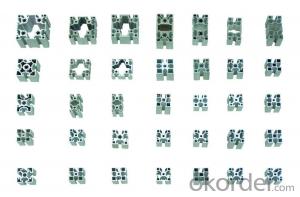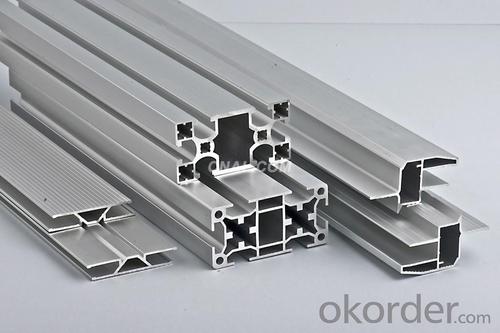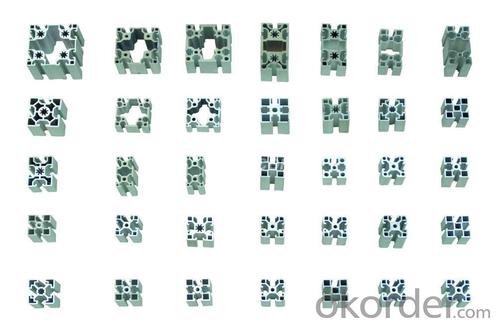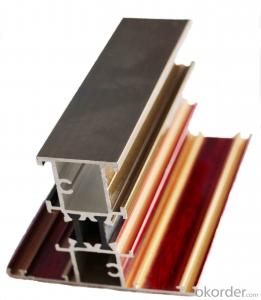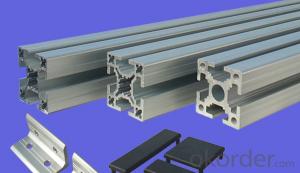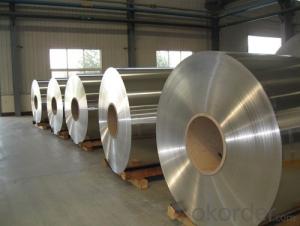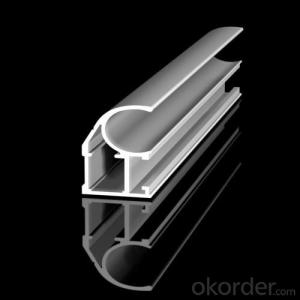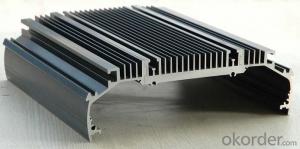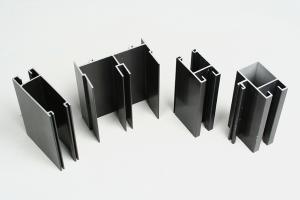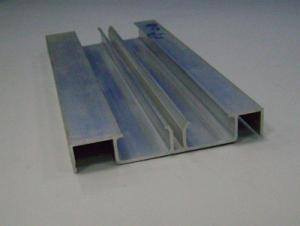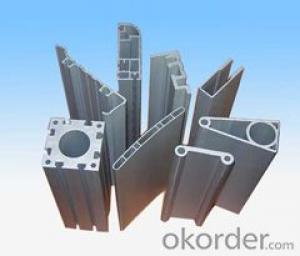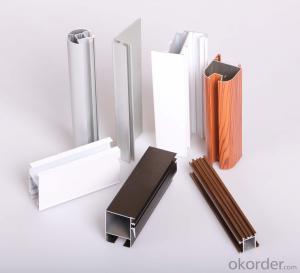Aluminum Alloy Profiles - Slot Aluminium Profiles Extrusions
- Loading Port:
- China Main Port
- Payment Terms:
- TT OR LC
- Min Order Qty:
- -
- Supply Capability:
- -
OKorder Service Pledge
OKorder Financial Service
You Might Also Like
Aluminium is a relatively soft,durable, lightweight, ductile and malleablemetal with appearance ranging from silvery to dull gray,depending on the surface roughness. It is nonmagnetic and does not easilyignite. A fresh film of aluminium serves as a good reflector (approximately92%) of visible light and an excellent reflector (as much as98%) of medium and far infrared radiation. The yield strength of pure aluminium is 7–11 MPa,while aluminium alloys have yield strengths ranging from200 MPa to 600 MPa. Aluminium has about one-third the density and stiffnessof steel. It iseasily machined,cast, drawn and extruded.
Aluminum Profile
Material | Alloy 6063,6061,6005or according to customer’s choice |
Temper | T3, T4, T5, T6 |
Surface | Anodize, electrophoresis, powder coating, PVDF coating, wood grain painting, matted, etc. |
Length | Coating 6.5 meters, Anodizing 6.5 meters, Mill finish 5 meters |
Application | Industrial, electrical equipment(TV set, air conditioner, refrigerator, computer), decoration,construction, transportation |
Custom Made | We can package following with customer's request. |
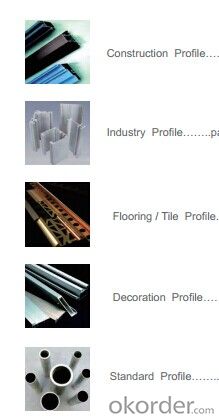
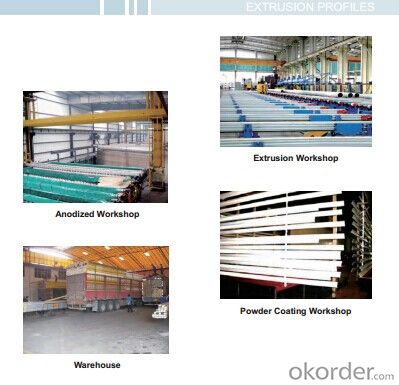
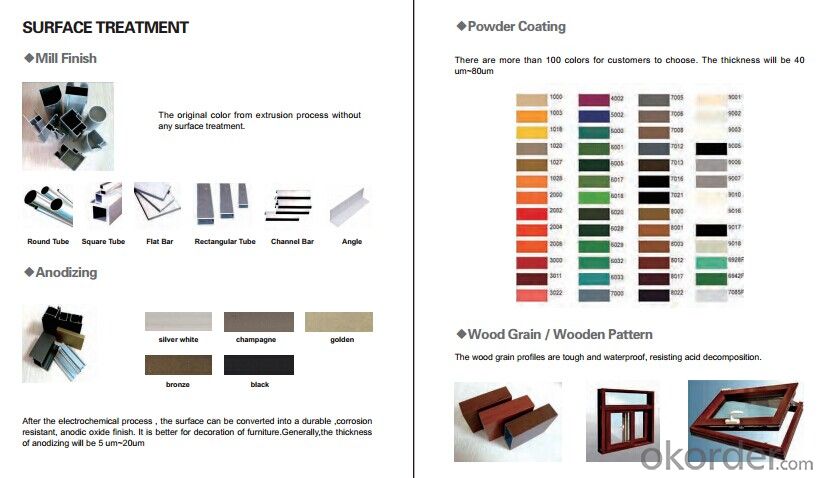
- Q: Who would like to know, aluminum radiator mainly used in which instruments or equipment, trouble to say more detailed points, thank you
- Application of aluminum radiator is quite extensive, you do not know where to, because he has the quality of light, and the price is reasonable, the general electronic instruments and equipment will be used, such as TV, audio amplifier, car circuit board, CPU computer graphics.
- Q: Can aluminum profiles be used for escalator steps?
- No, aluminum profiles are not typically used for escalator steps. Escalator steps are designed to bear significant weight and withstand constant foot traffic, making them subject to high levels of stress and wear. Therefore, escalator steps are usually made from durable materials such as steel or strong composite materials that can withstand heavy loads and provide long-lasting performance. While aluminum profiles may have various applications in architectural or industrial settings, they are not commonly used for escalator steps due to their comparatively lower strength and potential for deformation under heavy loads.
- Q: Can aluminum profiles be used for modular storage systems?
- Certainly! Aluminum profiles are indeed suitable for modular storage systems. This versatile material, known for its lightweight and strong properties, finds extensive use across multiple industries due to its durability and adaptability. When it comes to modular storage systems, aluminum profiles excel in their ability to be easily cut, shaped, and joined together. By utilizing aluminum profiles, one can effortlessly construct customized storage units that can be conveniently adjusted or expanded as required. These profiles can be effectively employed to construct shelving systems, cabinets, drawers, and various other storage components. The modular design facilitates simple assembly and disassembly, enabling hassle-free rearrangement or reconfiguration of the storage system whenever necessary. Moreover, aluminum profiles boast exceptional corrosion resistance, ensuring that the storage system remains in optimal condition even in challenging environments. Additionally, they come in a wide range of finishes, allowing for customization to achieve the desired aesthetic or design specifications. In summary, aluminum profiles offer a cost-effective and long-lasting solution for modular storage systems. Their flexibility, user-friendliness, and durability make them an ideal choice, providing the desired versatility and performance.
- Q: This question asks for methods to prevent corrosion on aluminum profiles during the installation process.
- <p>To prevent corrosion of aluminum profiles during installation, follow these steps: 1. Use stainless steel fasteners and avoid galvanized or carbon steel screws which can cause galvanic corrosion. 2. Keep the aluminum profiles clean and dry during installation to avoid contact with moisture which can initiate corrosion. 3. Apply a protective coating or sealant to the profiles, especially at cut edges where the protective oxide layer may be compromised. 4. Store aluminum profiles in a dry, cool place before installation to prevent moisture absorption. 5. Regularly inspect and maintain the profiles to identify and address any signs of corrosion early. By adhering to these practices, you can significantly reduce the risk of corrosion on aluminum profiles during installation.</p>
- Q: Is it possible to utilize aluminum profiles in regions with low temperatures?
- <p>Yes, aluminum profiles can be used in cold climates. Aluminum is a durable material with excellent resistance to corrosion and weathering, including low temperatures. It maintains its strength and does not rust or degrade in cold conditions. However, it's important to consider thermal expansion and contraction, as aluminum expands and contracts more than some other materials. Proper design and installation practices can mitigate these effects, making aluminum profiles suitable for use even in extreme cold environments.</p>
- Q: Are there any limitations or drawbacks to using aluminum profiles?
- Indeed, there exist limitations and drawbacks when utilizing aluminum profiles. One constraint lies in the comparatively lower strength of aluminum profiles when compared to materials like steel. Consequently, they may not be suitable for applications that necessitate high load-bearing capacity or structural integrity. Another disadvantage is the potential for aluminum profiles to be more costly than alternative materials. The expense of aluminum itself and the manufacturing processes involved in producing aluminum profiles can render them a pricier option for certain projects. Additionally, aluminum profiles are vulnerable to corrosion, particularly in harsh environments. Neglecting proper protective coatings or maintenance can result in the deterioration of aluminum profiles over time, thus impacting their performance and lifespan. Moreover, aluminum profiles have limited flexibility and may not be as easily modified or customized as other materials. This drawback can prove challenging in projects that require frequent alterations or adjustments. Lastly, in comparison to materials like copper, aluminum profiles possess lower thermal conductivity. Consequently, their utilization may be restricted in applications that demand efficient heat transfer, such as certain electrical or thermal management systems. In conclusion, while aluminum profiles offer numerous benefits, such as being lightweight, resistant to corrosion, and recyclable, it is crucial to consider these limitations and drawbacks before selecting them for a specific application.
- Q: Are there any differences between aluminum alloy and aluminum alloy?
- Aluminum alloy refers to the material, aluminum alloy refers to the productIt's like the difference between gold and gold
- Q: What are the different assembly options available for aluminum profiles?
- There are several assembly options available for aluminum profiles, depending on the specific requirements and applications. Some of the common assembly methods include: 1. Mechanical Fastening: This involves using screws, bolts, or rivets to join two or more aluminum profiles together. Mechanical fastening provides a strong and secure connection and is suitable for applications that require frequent disassembly or adjustment. 2. Welding: Aluminum profiles can be welded together using various welding techniques such as TIG (Tungsten Inert Gas) welding or MIG (Metal Inert Gas) welding. Welding provides a seamless and strong joint, making it ideal for applications that require maximum strength and rigidity. 3. Adhesive Bonding: Adhesive bonding involves using adhesives or glues to join aluminum profiles together. This method is suitable for lightweight applications or where aesthetics are important, as it provides a clean and seamless appearance without visible fasteners. However, adhesive bonding may not be as strong as mechanical fastening or welding. 4. Slotting and Connecting Elements: Aluminum profiles often have T-slot designs that allow the use of various connecting elements such as T-nuts, connectors, and brackets. These elements can be easily inserted into the slots and tightened to create a secure and adjustable joint. This method is particularly useful for applications that require flexibility and easy reconfiguration. 5. Corner Brackets: Corner brackets are specifically designed to connect aluminum profiles at right angles. These brackets can be easily attached using screws or bolts and provide a strong and rigid joint. Corner brackets are commonly used in frame construction or for creating corners in structural applications. 6. Interlocking Systems: Some aluminum profiles feature interlocking systems that allow them to be connected without the need for additional fasteners or connectors. These systems use specially designed shapes or grooves that fit together, providing a secure connection. Interlocking systems are often used in modular structures or systems that require quick assembly and disassembly. Overall, the choice of assembly method for aluminum profiles depends on factors such as strength requirements, aesthetics, ease of assembly, and the specific application or industry. It is important to carefully consider these factors to select the most suitable assembly option for a given project.
- Q: What are the features of the poor aluminum profiles?
- Poor quality aluminum profile:1, chemical composition unqualified, seriously endanger the safety of construction projects.2 、 profile corrosion resistance function is low.3, the film thickness is thin. The national standard rules of construction of aluminum oxide film thickness not less than 10um (m). The thickness is not enough, aluminum looks easy to rust and corrosion. Some no name and address, production license, certificate of inspection in the aluminum oxide film, the thickness of only 2 to 4um, some even without film.
- Q: Do aluminum profiles require any special tools or equipment for installation?
- Yes, aluminum profiles may require special tools and equipment for installation. Some of the tools commonly used include a miter saw or a circular saw with a non-ferrous metal blade for cutting the profiles to the desired length. A drill with the appropriate drill bits is necessary for creating holes for screws or other fasteners. Clamps or a vise may be needed to hold the profiles securely in place during installation. Additionally, a level, measuring tape, and a square are essential for ensuring accurate and precise installation. It is also important to have safety equipment such as safety glasses and gloves to protect against any potential hazards during the installation process. Overall, having the right tools and equipment is crucial to achieve a successful and efficient installation of aluminum profiles.
Send your message to us
Aluminum Alloy Profiles - Slot Aluminium Profiles Extrusions
- Loading Port:
- China Main Port
- Payment Terms:
- TT OR LC
- Min Order Qty:
- -
- Supply Capability:
- -
OKorder Service Pledge
OKorder Financial Service
Similar products
Hot products
Hot Searches
Related keywords

